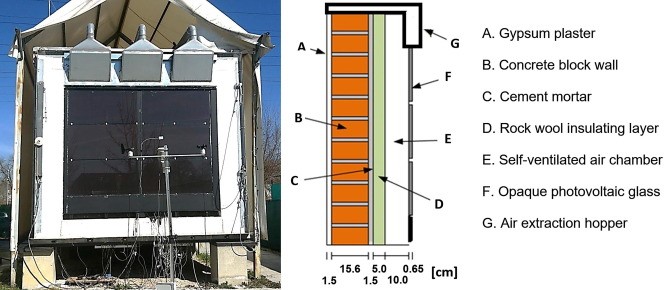The ENEDI research group of the UPV/EHU demonstrates the potential of the use, in Spain, of photovoltaic facades with forced ventilation (FVF) as a support for the heating and DHW system based on aerothermal heat pumps (ASHP), taking advantage of the whole building as a thermal storage system.
The European Union is changing its energy model towards a more efficient and sustainable one. In this new outlook, the Heat Pump (HP) has become a leading technology in the building energy sector. The use of the air source heat pump (ASHP) in the energy installations in the so-called nZEB low consumption buildings is currently on the increase. Furthermore, its performance improves when supported by solar energy, which can be achieved through the use of hybrid solar thermal photovoltaic elements (BIPV/T) integrated into the building’s façade, thus reducing consumption by 9 or 10%. However, the improvement can be even higher if a thermal storage system is incorporated.
This research demonstrates the potential of one particular photovoltaic forced ventilated façade (PV-FVF) used as support for a heating and DHW system based on ASHPs, taking advantage of the entire building as a thermal accumulation system. For this, an “Adaptive Indoor Temperature Setpoint Strategy”, called Tadaptive, is proposed as one alternative mode of operation for the PV-FVF plus ASHP hybridisation. The objective is to transfer thermal energy to the building when the façade is obtaining a higher solar thermal gain. The PV-FVF was characterised experimentally in exterior conditions in a PASLINK test. It was modelled numerically and analysed on a whole building level using a thermal simulation programme into which the predictions of the numerical model were incorporated.
Using as an example a residential building with underfloor heating in the city of Madrid, Spain, it was found that the use of the Tadaptive as the accumulation strategy could double the savings obtained with an ASHP supported by a PV-FVF, reducing heating consumption by 19.9%; while including the photovoltaic generation of the outer leaf reduces the total annual final energy for heat demand by 20.7%. The viability of this proposal is therefore demonstrated on the basis of existing technology as an alternative to reduce even further the energy consumption of nZEB type buildings for which the contribution of this hybridisation can be significant.
https://www.ehu.eus/es/web/enedi/-/2022_intpapers_apvforcedventilatedfacade-1

